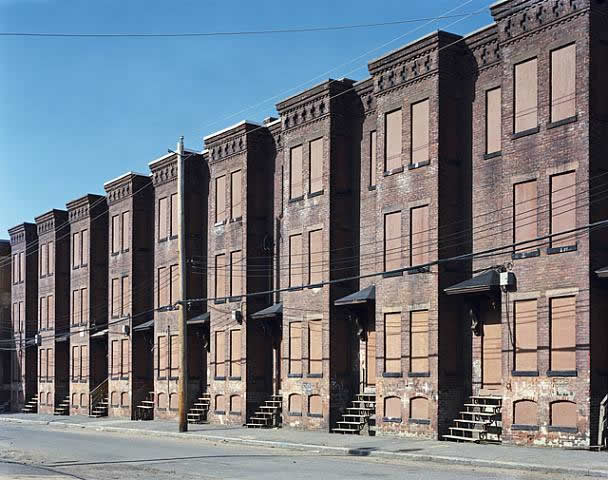Brendan Ciecko – Seeking Grit and Ghost Signs
Follow my blog with Bloglovin
I strolled along the cracked sidewalks and buckled paths of the “fossil American Venice” as Pulitzer Prize winning writer John McPhee once described this city. While passing through the sprawling district of canals littered with old brick mausoleums, I always notice something new. A century ago, that serpentine curve of the Connecticut River must have been a sight to be seen. Smoke stacks bellowing, trains roaring, and the bustle of things being produced in those factories. Each time I return, I examine the widespread decay, hoping that the “Queen of Industrial Cities” has stabilized and that she is in better condition than when I saw her last.

“Hamilton Street” by Brendan Ciecko
Although many buildings and businesses continue to fall into ruin, the lack of forward motion has acted like a time capsule in some ways – preserving visual culture, commercial history, and proof of a more vibrant time. Behind flaking paint and around each corner, loom the ever-fading ghost signs.

“Depot Square” by Brendan Ciecko
Most of my professional life has revolved around all things digital. Design is core to my being, and typography, a notable passion. When I travel my camera fills up with pictures of antique typography; hand-painted signs, neon masterpieces, and chiseled cornerstones.

“Haberman’s” by Brendan Ciecko
One of the things I can count on when visiting Western Massachusetts is that my ghost signs are still holding on tight. I’ve counted hundreds of interesting specimens within a mile radius of Holyoke’s majestic Neo-Gothic City Hall.

“Coca-Cola” by Brendan Ciecko
Oh, those ghost signs! High Street and Main Street have always been a feast for the eyes. Just look at the texture of the downtown, with its signage, old and new. But, the real treasures are of the businesses and advertisements long gone.

“Main Pharmacy” by Brendan Ciecko

“Essex Street” by Brendan Ciecko
Like a shoe-gazer on stage, you’d be surprised by what you’ll find with your head down. Terrazzo in the dipping entries of the old storefronts. Smashed marble and glass with hand-formed numbers and names of old departments stores. There must have been an old appliance shop here judging by that GE emblem, but I’ve never had the time to look it up.

“GE” by Brendan Ciecko

“Thom M” by Brendan Ciecko
In the 1960s and 70s, internationally renowned photographer Jerome Leibling took to the streets of this city’s raw downtown. During his time at Hampshire College, he brought along his students, including a young Ken Burns, to open their eyes and capture the grit of life.

“Behind tenement” by Jerome Leibling
New York Times photographer Mitch Epstein documented the story of his family’s rise and tragic fall by the hands of Holyoke.

“Newton Street Row Houses” by Mitch Epstein
A few months back, while visiting the deCordova, I came across a photograph in an exhibition titled “Overgrowth.” It was of a half-shredded tenement with a hand-painted sign as an added bonus. Without reading the label, I knew where it was.

“Coca-Cola, 1982” by Bill Ravanesi
These declining American cities have always captured our eye and imagination. I hope someday they’ll rebound, but until that day, I’ll continue collecting my snaps of signs and scenes of these formerly glorious New England mill towns.

Brendan Ciecko is an entrepreneur, designer, and technologist. He lives in Boston, MA.




